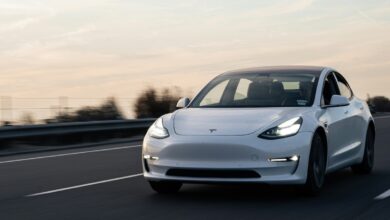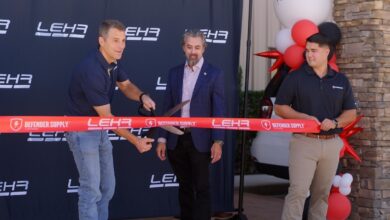Three Top Reasons Consumers Avoid EVs
Despite a growing number of pure electric vehicles hitting the market, their sales remain hampered by range, price and a thin charging network across the U.S, according to the latest survey by Autolist.com. But the study also revealed some encouraging signs that consumers’ expectations of EVs are starting to align with reality.
Autolist polled 1,567 current car shoppers in August about their attitudes towards EVs.
The survey found that the three biggest reasons people would not buy an EV today were their lack of adequate range, their relatively high cost compared to similar gas vehicles and weak charging infrastructure in their area.
Not surprisingly, the three biggest priorities for consumers when choosing an EV was price (by a wide margin), range and charging infrastructure. A growing number of EVs at both ends of the pricing spectrum doesn’t seem to be easing consumers’ concerns.
“Yes, there are more EVs available today than ever before, but that hasn’t done much to change consumers’ perceptions of them,” said Chase Disher, an analyst at Autolist. “The misconceptions that electrics faced at the beginning of this decade are still a major impediment to their success right now.”
However, Autolist’s survey did find some promising signs for EVs’ future. For one, respondents had realistic expectations when it came to the range of a mainstream, non-luxury EV. When asked what was the minimum range they would accept if they were buying a $35,000 EV, the most popular answer was ‘between 250 and 300 miles.’
That’s not far off from several EVs currently on the market. The Kia Soul Electric, Chevrolet Bolt, Hyundai Kona EV all start at around $37,000 (before any incentives) and offer 238 miles, 243 miles and 258 miles of EV range, respectively.
The survey’s other bright spots for EVs included:
- A majority of shoppers (69 percent) said they supported tax rebates, incentives and other perks at the local, state and federal level to encourage people to buy and use electric vehicles. Sixteen percent were against the idea and 15 percent said unsure.
- Eleven percent of consumers said there were no EVs made and sold by a brand they knew and trusted.
- When asked how their household would use an EV if they bought one today, 55 percent of respondents said it would be their primary vehicle. Meanwhile, 24 percent said the EV would be a secondary vehicle, 10 percent said it would be a third or extra vehicle and 11 percent were unsure.
“That so many people would use an EV as their household’s main vehicle rather than just an errand-runner or gadabout is a good sign for the future of EVs,” Disher said. “It shows that people are taking the idea of an electric vehicle seriously even if they don’t own one yet.”
Despite reasonable expectations for the battery range on ‘affordable’ EVs, consumers’ assumptions about luxury EVs were much different.
When asked what minimum range they would accept if car shoppers were spending $70,000 on an electric vehicle, the most popular answer – by a wide margin – was ‘More than 500 miles.’ What’s more, 61 percent of respondents said the vehicle would need more than 400 miles of range.
Currently, no mass-market EV has over 400 miles of range, nor is one expected for several years (Tesla’s Model S Long-Range has an EPA estimated range of 370 miles, making it the longest-range EV currently on the market).
Curiously, the survey found widespread confusion about Tesla’s Supercharging network – a feature considered by both industry analysts and rival automakers to be a key asset for the Tesla brand. Autolist asked car shoppers whether they thought any EV could charge on Tesla’s network (they can’t). Nearly three-quarters of respondents, 74 percent, said they were unsure. Fourteen percent said ‘No’ and 12 percent said ‘Yes.’



